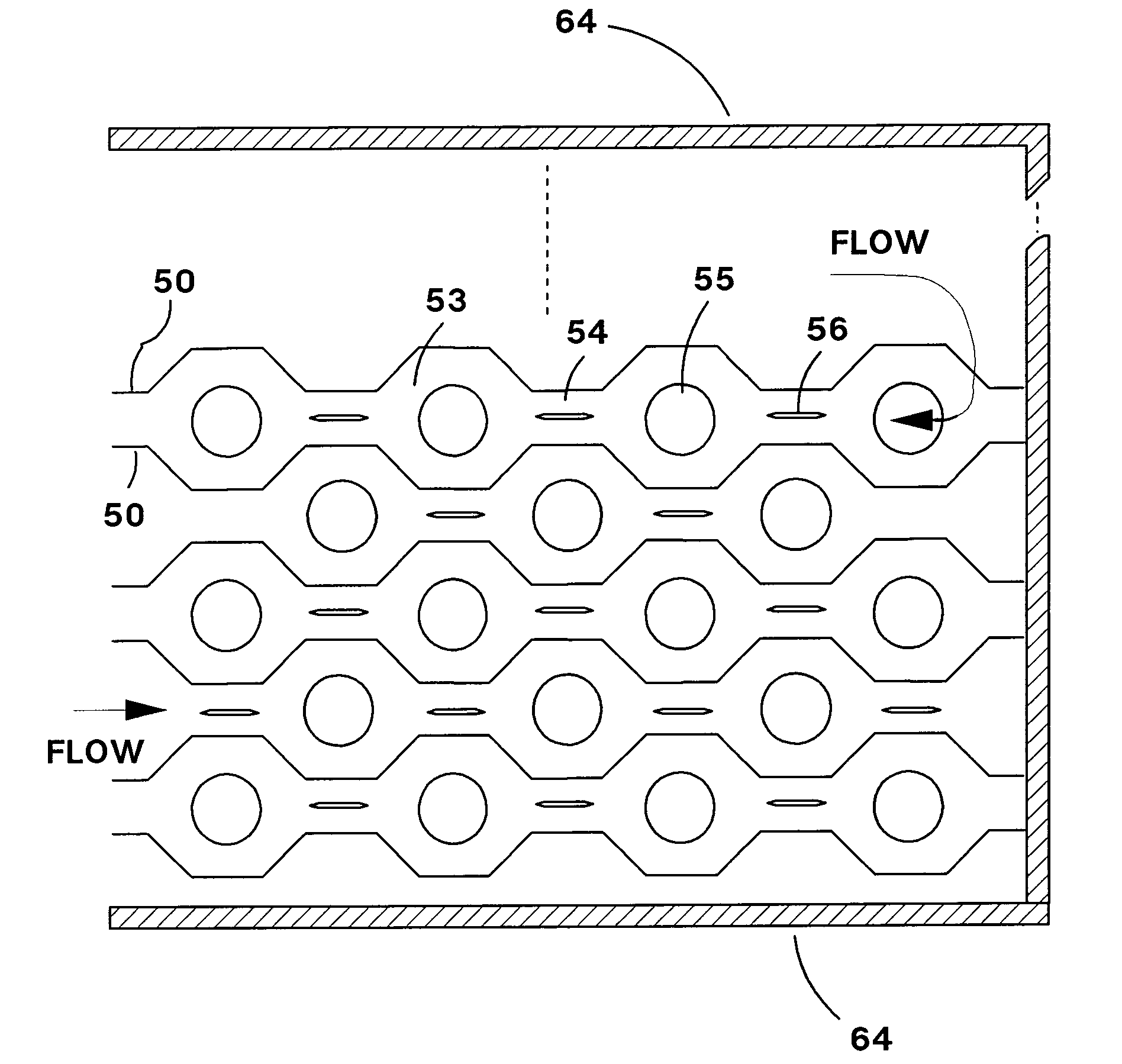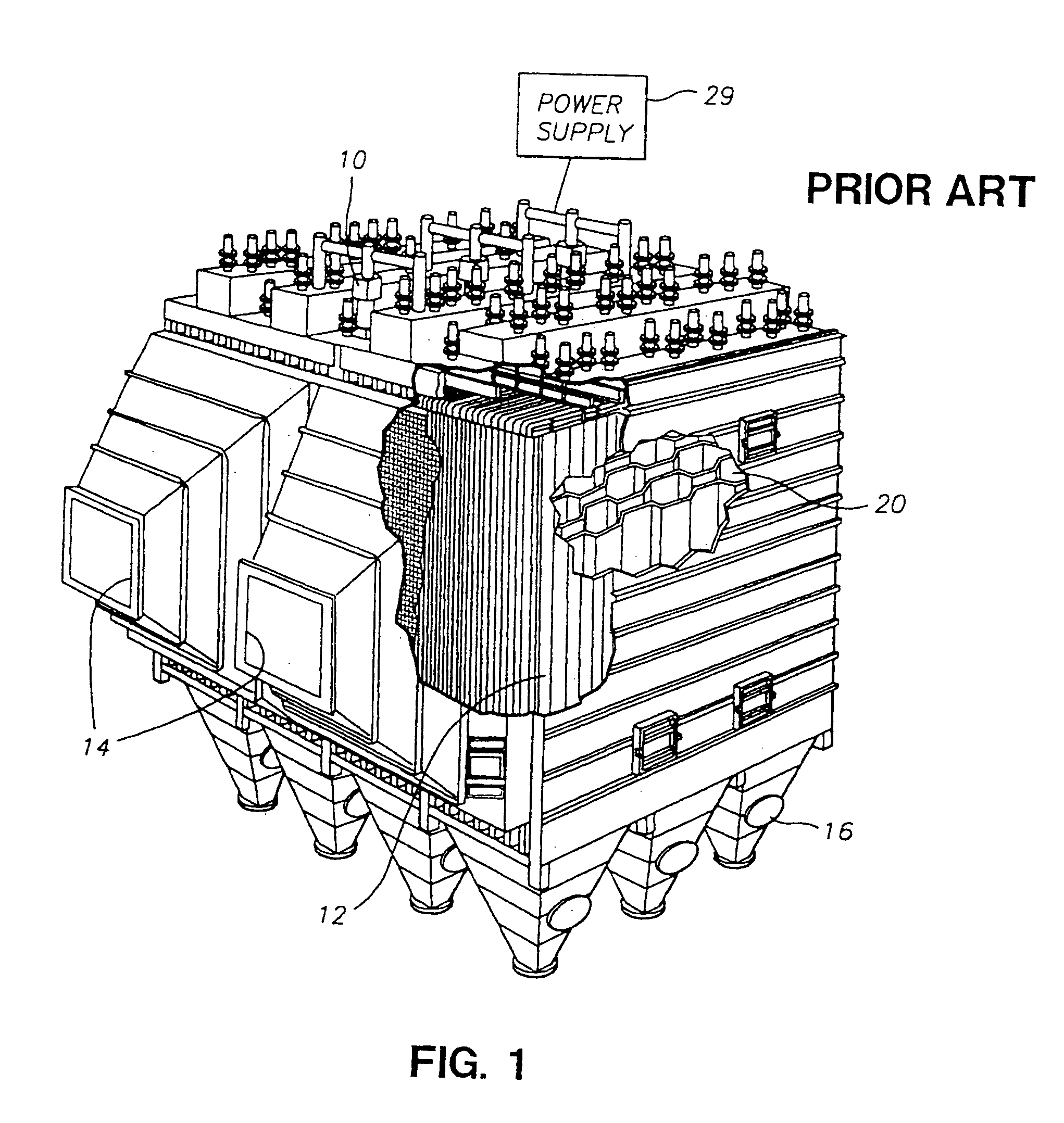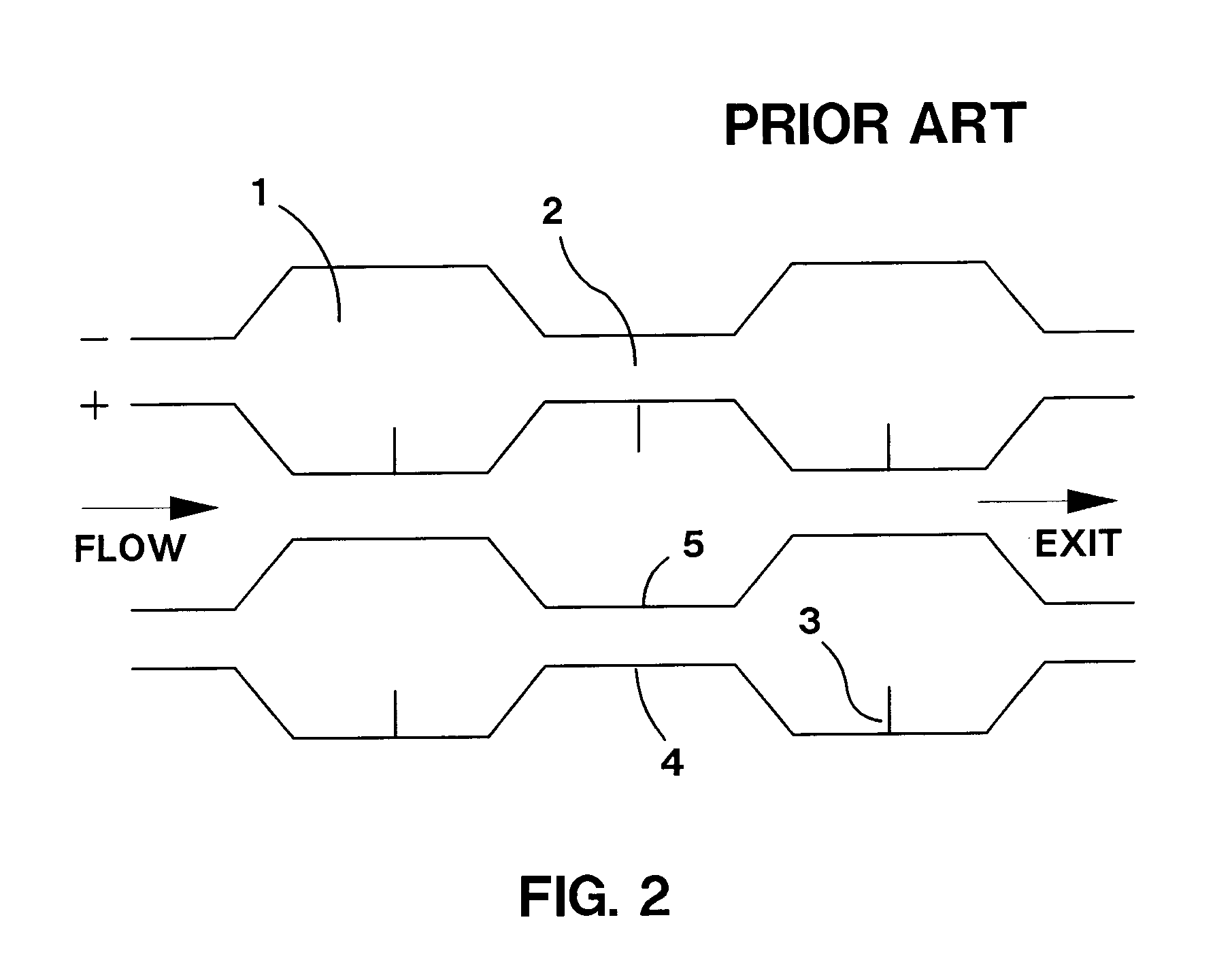Multi-stage collector and method of operation
a multi-stage, collector technology, applied in the direction of vapor flow control, electric supply techniques, separation processes, etc., can solve the problems of unacceptably high pressure drop and outlet particulate emissions, large space requirements, and high construction costs
- Summary
- Abstract
- Description
- Claims
- Application Information
AI Technical Summary
Benefits of technology
Problems solved by technology
Method used
Image
Examples
Embodiment Construction
[0056]Turning to FIG. 1, a prior art electrostatic precipitator is seen. A power supply 29 powers pairs of corrugated plates separated to form zones. Effluent gas enters the assembly from ports on the side 14 and passes through exiting on the other side (not shown). When the plates are rapped to clean, the collected dust falls to hoppers in the bottom where it can be removed 16. The array assembly 12 shown in detail in 20 is simply the plate corrugations of the alternately positive and negatively charged plates.
[0057]The present invention can be fitted into a similar assembly as that shown in FIG. 1 as will be described.
[0058]FIG. 2 shows a pair of the corrugated plates 4, 5 from the prior art assembly of FIG. 1. Wide 1 and narrow 2 zones are seen. Electrodes 3 are attached to one of the plates and located in the wide zones 1 to produce a corona discharge.
[0059]FIG. 3 shows an array that forms an embodiment of the present invention. A plurality of corrugated plate electrodes 50 form...
PUM
| Property | Measurement | Unit |
|---|---|---|
| pressure | aaaaa | aaaaa |
| velocities | aaaaa | aaaaa |
| velocities | aaaaa | aaaaa |
Abstract
Description
Claims
Application Information
 Login to View More
Login to View More - R&D
- Intellectual Property
- Life Sciences
- Materials
- Tech Scout
- Unparalleled Data Quality
- Higher Quality Content
- 60% Fewer Hallucinations
Browse by: Latest US Patents, China's latest patents, Technical Efficacy Thesaurus, Application Domain, Technology Topic, Popular Technical Reports.
© 2025 PatSnap. All rights reserved.Legal|Privacy policy|Modern Slavery Act Transparency Statement|Sitemap|About US| Contact US: help@patsnap.com



